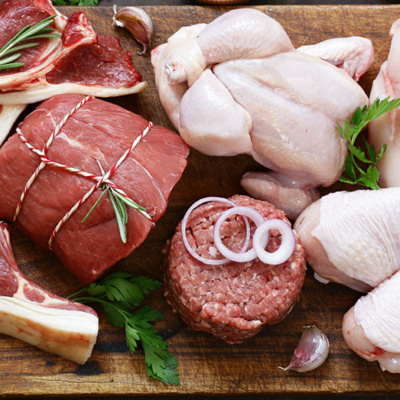Top of Mind News
Restaurant Menu Design: The Real Food Cost Killers
Why the name change? IHOP’s President Explains the Daring Campaign
The Decision That Could Alter Employment Contracts for Restaurants
Domino’s is Helping Fix Potholes Across America
Four Strategic Reasons For Restaurants To Use Consumer Location Data, Beyond Advertising
The Dish Tips
Blackberries: Blackberry Supplies out of California and Mexico are limited due to hot weather and harvests out of Georgia are ramping up, but volumes are limited due to the heavy rainfall.
Consider using blueberries and strawberries.
Squash: Harvests in the East were delayed due to heavy rains. These delays caused a brief decrease in supplies and some increases in pricing on Zucchini and Yellow Squash.
Remember to store your Squash in the warmest part of the cooler to prevent chill damage.
The Farm

Poultry
Chicken output for the week ending June 2nd was .8% smaller than the same week last year and down substantially (10.2%) from the previous week due to the Memorial Day holiday. The USDA this week raised their 2018 chicken production forecast by 119 million lbs. and is now expected to be 1.9% larger than last year. 2019 chicken output is estimated to come in 2% better than this year. If realized, this should temper any notable gains for the chicken markets. Chicken exports during April were up 22.3% from the prior year and were the biggest for the month since 2013. If strong exports endure, it may provide added support to chicken leg meat prices which typically happens in July. The ARA Chicken Wing Index is the lowest since June 2014.

Beef
Beef production last week was 3.6% larger than the same week last year. Near slaughter ready cattle supplies are expected to remain readily available this summer. Currently, October cattle futures are at a 4.1% price discount to the June contract. So, lower beef prices should occur in the coming weeks as well. Forward choice ribeye (15%), choice short loin (25%) and ground beef (11%) sales for delivery 22-90 days out are pricing this week at a discount to their spot markets. U.S. beef exports during April were up 16.2% from last year and were a record for the month. Continued solid exports could temper the seasonal price weakness that usually occurs from Father’s Day through the end of July.
Pork output last week was 11.6% bigger than the previous holiday shortened week and was up 4.9% from the same week last year. The USDA this week cut their 2018 pork production forecast by 55 million lbs. but is still expected to be 4.4% better than last year. U.S. pork exports during April were up 22.3% from last year and were a record for the month. But, Mexico announced a 20% import tariff on U.S. hams which may provide added price support. Since 2013, the average move for the 20-23 lb. ham market over the next five weeks was up 14.8%.
The Sea
The shrimp markets continue to track below 2017 levels this spring. This is occurring despite unimpressive imports in April. Total U.S. shrimp imports during the month were 6.8% less than the previous year. The U.S. dollar has firmed noticeably since April which should encourage imports. Thus, the shrimp markets are likely to remain below a year ago.
The Garden

Produce
The chief lettuce harvest has transitioned to the Salinas California region where it will remain throughout the summer. Lettuce supplies have been adequate during the process. Iceberg lettuce shipments last week from the region were slightly better than the previous week and were 16% more than the same week last year. Still, history suggests the downside price risk in the lettuce markets from here is nominal. The tomato harvest is transitioning north on the East Coast. This could cause some modest volatility to occur within the tomato markets.
The Kitchen Sink
Solid export demand continues to underpin the butter market. During April, the U.S. exported 162% more butter than the previous year marking the largest total since the summer of 2014. U.S. butter remains at a significant discount to the international markets which should cause strong butter exports to persist into the summer. That said, the inflated price levels are slowing domestic demand which should temper the upside in wholesale prices. U.S. cheese exports in April were 22% better than last year. Solid export demand could underpin cheese prices this summer as well.
The domestic corn and soybean crops are progressing with planting basically completed. Warm weather with rain has caused the crops to mature rapidly which is generally positive for crop yields. These factors are influencing corn and soybean prices to multi-month lows. But, these markets could find a short-term bottom soon.

Gas/Oil
Natural gas prices have risen as of late and are up 8.1% since March. As of last Friday, total U.S. natural gas stocks were 30.5% smaller than a year ago. Expect natural gas prices to be influenced by electricity generation needs this summer.










